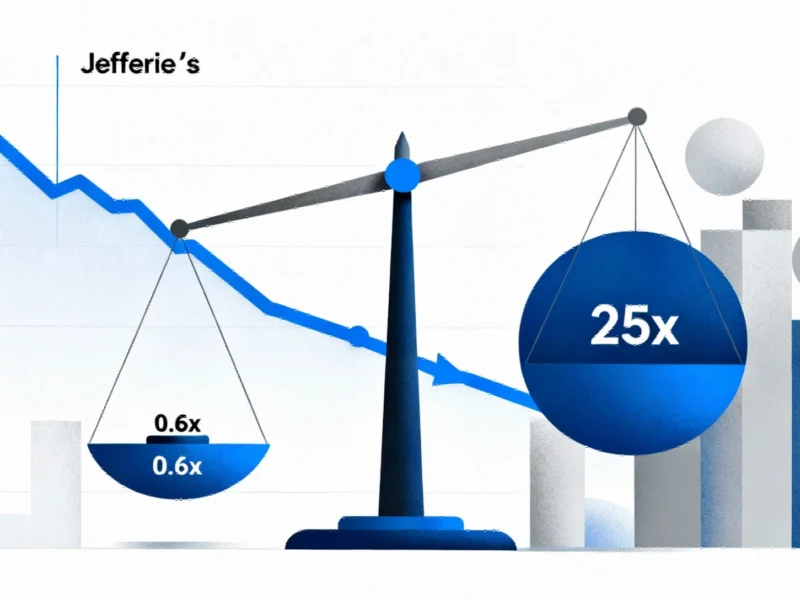According to Fortune, Airwallex has crossed $1 billion in annualized revenue as of October with a remarkable 90% year-over-year growth rate. The Singapore-based fintech company, founded in 2015, achieved this milestone just one year after reaching its first $500 million in annualized revenue. CEO Jack Zhang revealed that Airwallex now boasts gross profit margins above 60% and was last valued at $6 billion in a May funding round. The company has diversified from its initial cross-border payments focus into business banking accounts and spend management, putting it in direct competition with Stripe, Ramp, Brex, and Revolut. After achieving cash flow positivity in late 2023, Airwallex is targeting profitability again by Q4 2025 while accelerating its push into North American and European markets, which now comprise nearly 40% of its revenue. This rapid growth trajectory signals a fundamental shift in how global fintech infrastructure is being built.
The Global Infrastructure Moat
What makes Airwallex particularly compelling from a technical perspective is its decade-long investment in building what Zhang calls their “real moat” – the underlying infrastructure spanning both regulatory compliance and financial services. Unlike U.S.-focused competitors who built for domestic markets first, Airwallex had to solve global complexity from day one due to Australia’s relatively small market size. This forced them to develop sophisticated multi-jurisdictional banking infrastructure, payment routing optimization, and compliance systems that can handle dozens of regulatory environments simultaneously. Their ability to offer this infrastructure as APIs to other fintech companies like Brex, Rippling, and Deel demonstrates the technical maturity of their platform. This infrastructure-first approach creates significant barriers to entry that pure software fintech players cannot easily replicate.
Beyond Payments: The Platform Play
Airwallex’s revenue distribution reveals a sophisticated platform strategy that many fintech companies struggle to achieve. With business accounts comprising 34% of revenue, spend management at 20%, and payments at 30%, they’ve successfully avoided the single-product trap that plagues many fintech startups. This diversification is technically challenging because each product category requires different underlying systems – banking infrastructure for accounts, card processing for spend management, and payment rails for cross-border transactions. The fact that they’ve achieved 60% gross margins across this diverse product suite suggests they’ve built efficient, scalable infrastructure rather than relying on costly third-party services. This technical architecture enables them to offer what Zhang describes as “banking, payments, spend, and treasury management all in a single platform” – something that requires deep integration across traditionally siloed financial systems.
The AI and Stablecoin Frontier
Airwallex’s technical roadmap reveals interesting strategic bets, particularly around AI-powered payments and cautious exploration of stablecoins. Zhang’s mention of building “foundational infrastructure for global agentic payments” suggests they’re preparing for a future where AI agents autonomously handle cross-border transactions. This requires building robust APIs, sophisticated fraud detection systems, and real-time settlement capabilities that can operate without human intervention. Their hiring of stablecoin developers, despite Zhang’s stated skepticism about blockchain for B2B payments, indicates they’re maintaining optionality in their technical architecture. The challenge will be integrating these emerging technologies without compromising their core value proposition of reliability and regulatory compliance across multiple jurisdictions.
Redefining Fintech Competition
Airwallex’s success challenges the conventional Silicon Valley playbook of dominating a single market before expanding globally. Their “outsider” status, as Zhang describes it, forced them to build globally scalable systems from inception rather than retrofitting domestic solutions for international markets. This technical approach creates a fundamentally different competitive dynamic – they’re not trying to beat Ramp at serving Ohio-based companies, but rather serving the growing segment of businesses that operate across multiple countries from day one. As more companies embrace remote work and global operations, Airwallex’s infrastructure-first, globally-native architecture positions them uniquely in the fintech landscape. Their 90% growth rate amid challenging market conditions suggests this approach is resonating with businesses that need truly global financial infrastructure rather than domestic solutions with international add-ons.




